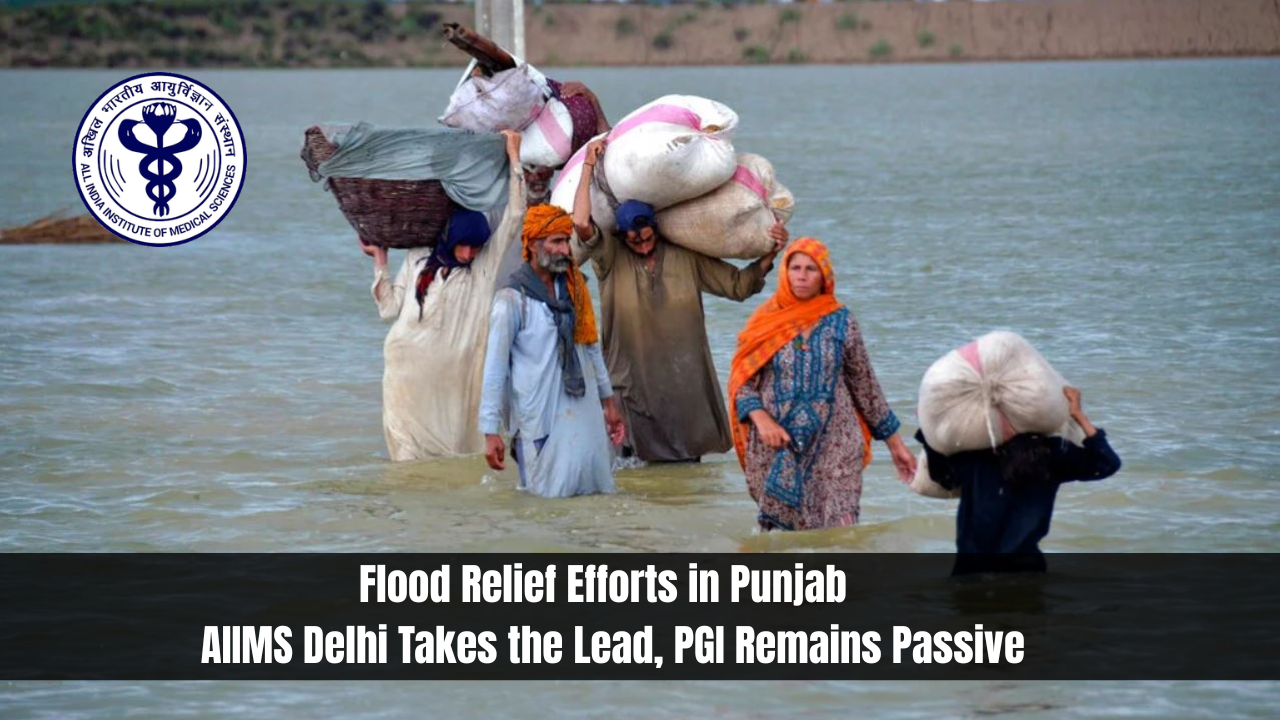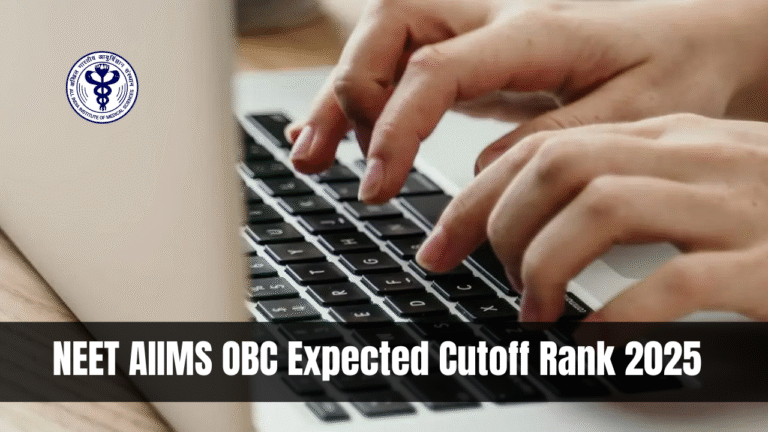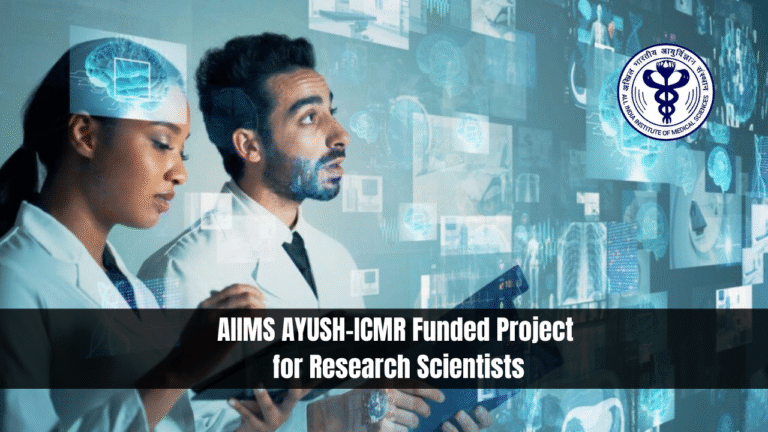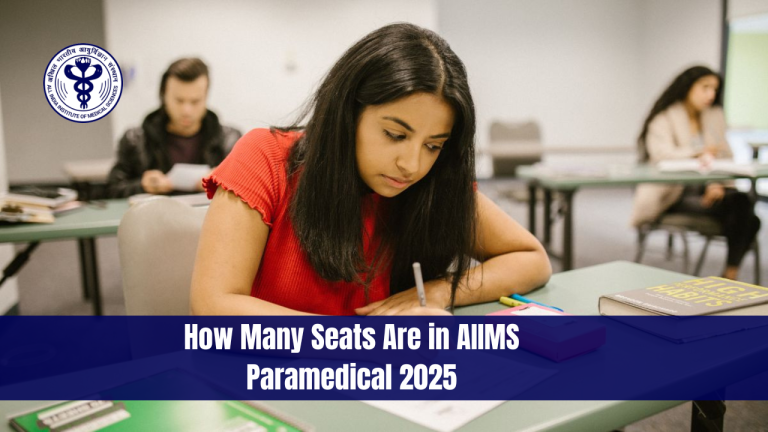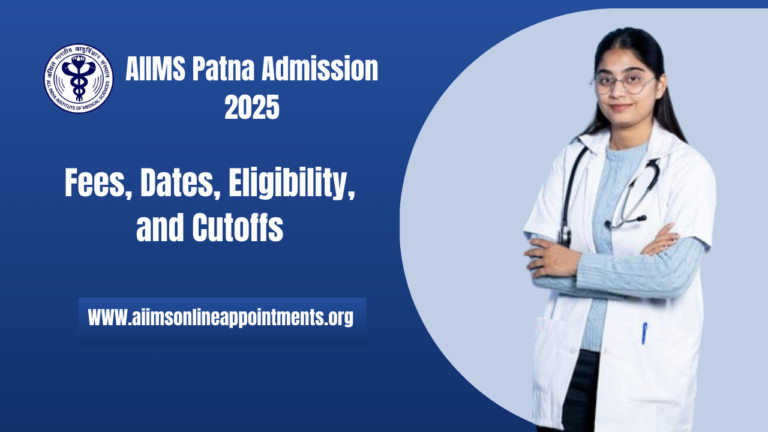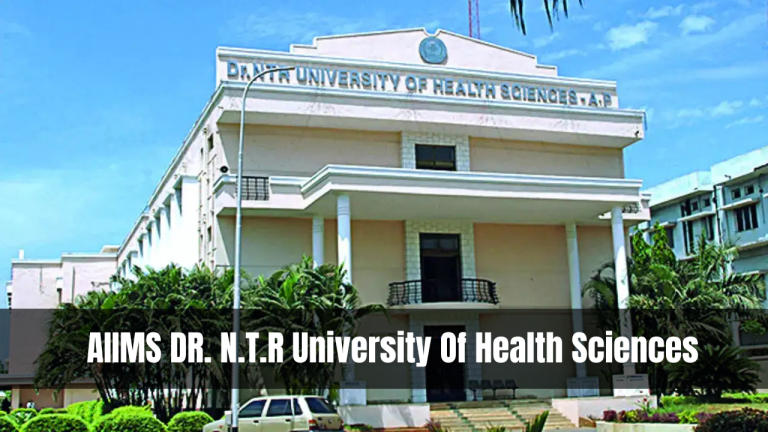Flood Relief Efforts in Punjab – AIIMS Delhi Takes the Lead, PGI Remains Passive
Flood Relief Efforts in Punjab. Flooding has been a recurring natural disaster in Punjab, severely affecting lives, property, and agriculture. The devastating floods in the state have raised significant concerns about the preparedness and responsiveness of healthcare institutions in providing relief. In the wake of these catastrophic events, AIIMS Delhi has stepped up, leading the charge in flood relief efforts, while PGI Chandigarh has been largely passive in comparison, leaving many questioning its role during such crises.
Flood Situation in Punjab – A Growing Concern
Punjab, known for its lush fields and agricultural economy, has been grappling with severe flooding this season. Heavy monsoon rains have swelled rivers like the Sutlej, Beas, and Ravi, leading to widespread inundation across several districts. The floods have caused significant damage to infrastructure, homes, and crops. Thousands have been displaced, while families have lost loved ones and livelihoods.
As floodwaters continue to rise, the state faces immense challenges in coordinating rescue and relief efforts. Local government agencies have been working around the clock, but the sheer scale of the disaster has overwhelmed the resources at their disposal.
AIIMS Delhi Steps Up -Leading the Charge in Flood Relief
Amidst these challenges, AIIMS Delhi (All India Institute of Medical Sciences) has emerged as a beacon of hope for many victims. The institute, known for its medical excellence, has redirected its resources and expertise towards providing relief to flood-affected individuals. AIIMS has mobilized teams of doctors, nurses, and support staff to flood-hit areas, setting up makeshift healthcare facilities and providing urgent medical care.
Key Actions by AIIMS Delhi:
- Field Hospitals and Medical Camps: AIIMS has set up mobile health units and medical camps in the most affected areas of Punjab. These camps are equipped to provide emergency care, including treatment for injuries, waterborne diseases, and other health issues arising from the floods.
- Collaboration with State Authorities: AIIMS has collaborated with state health departments and local government agencies to ensure the rapid distribution of medical supplies and relief materials.
- Psychological Support: The institute has also focused on providing mental health support, setting up counseling centers to help individuals cope with the trauma caused by the floods.
- Logistical Support: AIIMS has sent its ambulances and rescue teams, alongside National Disaster Response Force (NDRF) personnel, to help evacuate people from submerged areas.
PGI Chandigarh – A Passive Role Amidst the Crisis
While AIIMS Delhi has taken proactive steps, PGI Chandigarh (Postgraduate Institute of Medical Education and Research) has remained largely passive. Despite being one of the top medical institutes in India and situated within the flood-affected region, PGI’s involvement in the flood relief operations has been minimal.
Why is PGI Not Stepping Up?
- Lack of Mobilization: PGI has not mobilized its resources effectively to aid in the rescue and relief efforts. While it has treated patients at its own hospital, the institute has not extended its services to the flood zones as much as AIIMS has.
- Lack of Coordination with Local Agencies: There have been complaints that PGI has not coordinated well with the Punjab government or the NDRF in relief operations. This lack of inter-institutional cooperation has led to delays in providing necessary medical assistance to those in need.
- Limited Outreach: Unlike AIIMS, which has set up field hospitals in disaster zones, PGI’s efforts have been confined mainly to its own campus. While its expertise is commendable, the institution’s lack of outreach has raised concerns about its role during such an emergency.
State and National-Level Efforts: A Coordinated Response
The Punjab government has also been actively involved in the flood relief efforts. Chief Minister Bhagwant Mann has been in direct communication with local authorities, ensuring that relief materials such as food, clean drinking water, and medicines reach those in need.
- Relief Packages and Food Distribution: The government has coordinated with NGOs and volunteer organizations to distribute flood relief packages, including dry food, blankets, and hygiene kits.
- Rescue and Evacuation Operations: The NDRF has been deployed to rescue stranded people from floodwaters. The government has also used helicopters to airlift people from remote areas cut off by the floods.
- Temporary Shelters: The government has set up temporary relief camps for displaced families, providing them with essential services such as healthcare, food, and sanitation.
Role of NGOs and Volunteer Organizations
Apart from government bodies and AIIMS, many NGOs and volunteer groups have stepped in to provide much-needed support. Organizations like Sewa International, Goonj, and Samaritan’s Purse have been instrumental in providing both immediate and long-term assistance to those affected by the floods.
These organizations are involved in distributing relief packages, setting up mobile health clinics, and working alongside the local police and fire brigades to rescue trapped individuals.
Challenges in Flood Relief Operations
Despite these coordinated efforts, there are still several challenges that need to be addressed:
- Logistical Issues: The extent of the floods has made transportation and distribution of relief materials difficult, especially in remote rural areas.
- Health Concerns: The stagnant water has led to an increase in waterborne diseases like dysentery, cholera, and malaria. Medical camps are overwhelmed, and more healthcare professionals are needed to address the surge in health concerns.
- Inadequate Coordination: There remains a need for better coordination between various healthcare institutions, NGOs, and government bodies to ensure a more streamlined relief process.
Looking Ahead: Rebuilding Punjab Infrastructure and Healthcare System
As Punjab looks to recover from the floods, it’s clear that rebuilding the state’s infrastructure and healthcare system will be crucial. The disaster has highlighted the urgent need for better disaster preparedness and response plans, especially in medical institutions.
Institutes like AIIMS must continue to take the lead, but there’s also a need for collaboration from local institutions such as PGI. Post-disaster recovery plans should prioritize long-term solutions, focusing not just on immediate relief but on strengthening healthcare infrastructure for future crises.
Conclusion
The flood relief efforts in Punjab are a reminder of the power of collaborative action. While AIIMS Delhi has demonstrated proactive leadership in addressing the immediate healthcare needs of flood victims, PGI Chandigarh has missed an opportunity to contribute meaningfully. Moving forward, it’s vital for all healthcare institutions to coordinate better and provide timely assistance to those in need during natural calamities.

